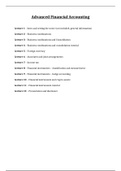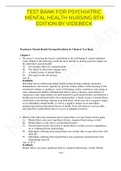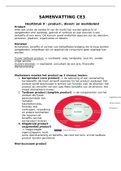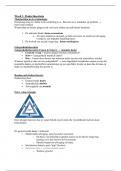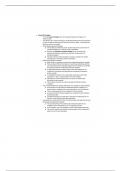Samenvatting
Summary lectures Advanced Financial Accounting
- Instelling
- Tilburg University (UVT)
Summary of the lectures of Advanced Financial Accounting with topics such as business combinations, consolidation, foreign currency, joint arrangements and associates, income taxes, financial instruments and presentation and disclosure. Book "Applying IFRS Standards" chapters 6, 7, 14, 16, 20, 21...
[Meer zien]
